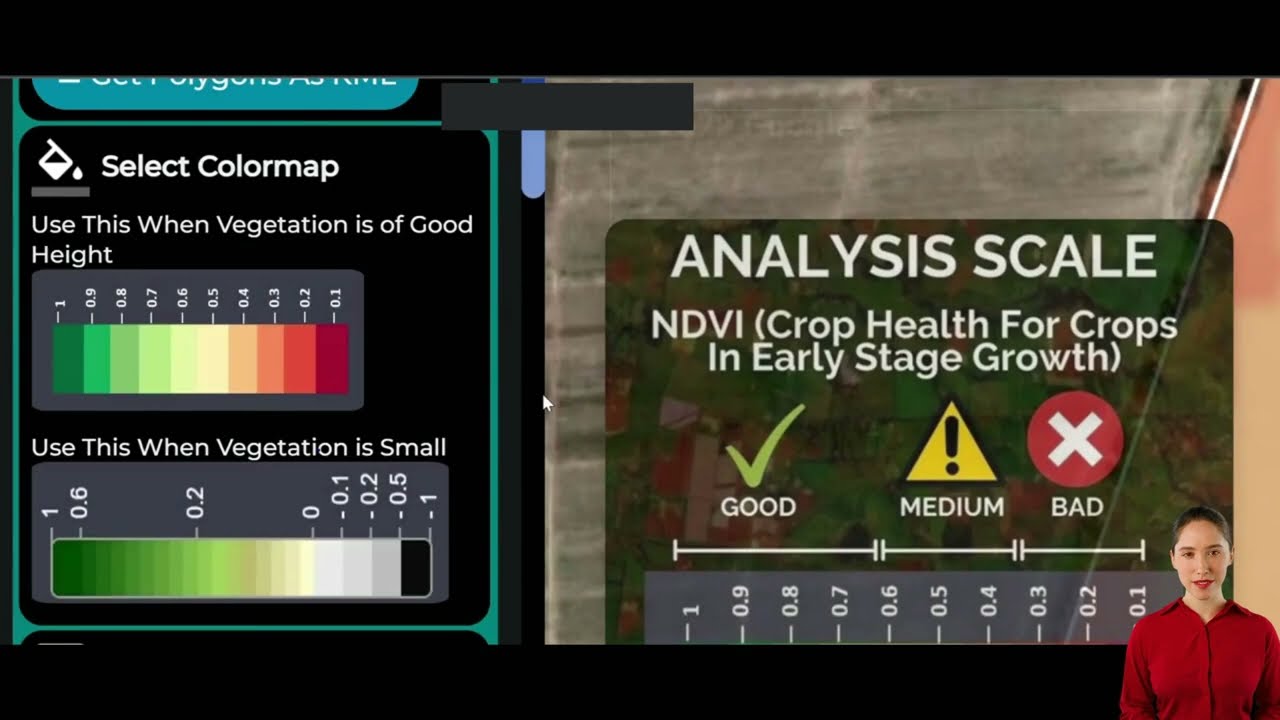USDA Designates Sioux County, Iowa as Natural Disaster Area: Emergency Loans Available for Drought-Affected Farmers
“Sioux County, Iowa, and neighboring counties in 2 states are now eligible for USDA emergency loans due to severe drought.”
In a significant development for the agricultural community, the United States Department of Agriculture (USDA) has recently designated Sioux County, Iowa, as a primary natural disaster area due to the severe drought conditions plaguing the region. This crucial decision opens the door for local producers to access vital resources for agricultural recovery and financial management. As we delve into the implications of this designation, we’ll explore how USDA disaster assistance programs and Farm Service Agency (FSA) emergency loans are providing crucial support for farmers affected by this natural disaster.
Understanding the USDA Disaster Designation
The USDA’s decision to classify Sioux County as a primary natural disaster area is a response to the persistent and severe drought conditions that have significantly impacted agricultural operations in the region. This designation is not made lightly; it follows a rigorous assessment of environmental conditions and their effects on farming activities.
- Drought Severity: The designation reflects the extreme nature of the drought, which has led to substantial crop losses and challenges for livestock producers.
- Economic Impact: The drought has placed considerable financial strain on farmers, affecting crop yields and increasing operational costs.
- Regional Scope: While Sioux County is the primary designated area, neighboring counties in Iowa and South Dakota are also eligible for assistance, recognizing the broad impact of the drought.
This designation serves as a trigger for various USDA disaster assistance programs, designed to provide a safety net for farmers during times of environmental stress. It’s a clear indication of the government’s commitment to supporting the agricultural sector through challenging periods.

Emergency Loans: A Lifeline for Drought-Affected Farmers
One of the most immediate and impactful benefits of the disaster designation is the availability of emergency loans through the Farm Service Agency. These loans are designed to provide critical financial support to farmers who have suffered losses due to the drought.
Key aspects of the emergency loan program include:
- Loan Purpose: Farmers can apply for emergency loans to replace equipment, reorganize farming operations, and refinance debts.
- Eligibility: Producers in Sioux County and eligible neighboring counties can apply for these loans.
- Application Process: The farm loan application process considers loss severity, available security, and repayment capability.
- Loan Terms: These loans often come with favorable terms to assist farmers in recovery without adding undue financial burden.
The availability of these emergency loans underscores the USDA’s commitment to providing tangible support to farmers during times of crisis. It’s not just about immediate relief; these loans are structured to help farmers rebuild and strengthen their operations for long-term sustainability.
Broader Implications of the Disaster Designation
The disaster designation for Sioux County has implications that extend beyond emergency loans. It highlights several critical aspects of modern agriculture and government support:
- Climate Adaptation: The recurring nature of drought conditions emphasizes the need for climate-adaptive farming practices.
- Agricultural Conservation Agreements: This situation underscores the importance of conservation agreements in protecting farm resources during environmental challenges.
- Financial Management in Agriculture: The availability of emergency loans brings financial management in agriculture to the forefront, emphasizing the need for robust planning and risk management strategies.
“USDA’s disaster assistance programs consider 3 key factors: loss severity, available security, and repayment capability.”
As we navigate these challenging times, it’s crucial for farmers to be aware of all available resources. The USDA encourages producers to explore farmers.gov, a comprehensive resource for agricultural information and support. Additionally, filing a Notice of Loss when applicable is an essential step in accessing certain types of assistance.
The Role of Technology in Agricultural Disaster Management
In the face of natural disasters like the drought affecting Sioux County, technology plays an increasingly vital role in agricultural management and recovery. Advanced tools and platforms are becoming indispensable for modern farmers navigating environmental challenges.
Farmonaut, a leading agricultural technology company, offers innovative solutions that can be particularly valuable in disaster-affected areas. Through its satellite-based farm management solutions, Farmonaut provides real-time crop health monitoring and AI-based advisory systems. These tools can be crucial for farmers in Sioux County and surrounding areas as they work to recover and adapt their operations in response to drought conditions.
Farmonaut’s key offerings that can assist farmers in disaster-affected areas include:
- Satellite-Based Crop Health Monitoring: Helps farmers assess the impact of drought on their crops and make informed decisions about resource allocation.
- AI Advisory System: Provides personalized recommendations for crop management, particularly valuable in adapting to challenging environmental conditions.
- Resource Management Tools: Assists in optimizing the use of limited resources, critical during drought periods.
To explore these advanced agricultural solutions, farmers can access Farmonaut’s services through various platforms:
For developers and businesses looking to integrate advanced agricultural data into their systems, Farmonaut offers API access:
API: https://sat.farmonaut.com/api
API Developer Docs: https://farmonaut.com/farmonaut-satellite-weather-api-developer-docs/
USDA Programs and Initiatives Supporting Disaster Recovery
The USDA’s response to the drought in Sioux County is part of a broader framework of programs designed to support farmers through various challenges. Understanding these programs is crucial for affected farmers to fully utilize available resources.
Key USDA initiatives include:
- Dairy Margin Coverage Program: Offers protection to dairy producers when the difference between the all-milk price and the average feed price falls below a certain dollar amount selected by the producer.
- Environmental Quality Incentives Program (EQIP): Provides financial and technical assistance to agricultural producers to address natural resource concerns and deliver environmental benefits.
- Conservation Reserve Program (CRP): Encourages farmers to convert highly erodible cropland or other environmentally sensitive acreage to vegetative cover.
- Risk Management Agency (RMA) Crop Insurance: Offers policies to help farmers manage risks associated with natural disasters.
These programs, along with the emergency loans, form a comprehensive support system for farmers facing natural disasters. They not only provide immediate relief but also encourage long-term sustainable practices that can help mitigate the impact of future environmental challenges.
The Application Process for Emergency Loans
For farmers in Sioux County and eligible neighboring areas, understanding the application process for emergency loans is crucial. The Farm Service Agency has streamlined this process to ensure timely assistance, but it’s important to be prepared and informed.
Steps in the application process:
- Contact Local FSA Office: The first step is to reach out to your local FSA office to discuss your situation and eligibility.
- Gather Documentation: Prepare documentation of your farm’s production and financial records, including evidence of losses due to the drought.
- Complete Application Forms: Fill out the necessary application forms, which will be provided by your FSA office.
- Assessment of Loss and Security: FSA officials will assess the severity of your losses and evaluate available security for the loan.
- Repayment Capability Analysis: Your ability to repay the loan will be evaluated based on your farm’s financial situation and future projections.
- Loan Decision: Based on the assessment, a decision will be made regarding your loan application.
It’s important to note that while the process is designed to be as efficient as possible, thorough evaluation is necessary to ensure the program’s integrity and effectiveness. Farmers are encouraged to start the application process as soon as possible to expedite potential relief.
Impact of Drought on Sioux County Agriculture
The drought’s impact on Sioux County’s agricultural sector has been significant, affecting various aspects of farming operations and the local economy. Understanding this impact is crucial for contextualizing the importance of the USDA’s disaster designation and the subsequent aid programs.
| County | Drought Severity Level | Estimated Crop Loss Percentage | Number of Affected Farms | Available Emergency Loan Amount | Loan Application Deadline |
|---|---|---|---|---|---|
| Sioux County, IA | Severe | 40-50% | ~1,500 | Up to $500,000 | May 15, 2024 |
| Plymouth County, IA | Moderate to Severe | 30-40% | ~1,200 | Up to $500,000 | May 15, 2024 |
| O’Brien County, IA | Moderate | 25-35% | ~1,000 | Up to $500,000 | May 15, 2024 |
| Lyon County, IA | Moderate to Severe | 30-40% | ~900 | Up to $500,000 | May 15, 2024 |
| Union County, SD | Moderate | 20-30% | ~800 | Up to $500,000 | May 15, 2024 |
This table provides a clear overview of the drought’s impact across Sioux County and neighboring areas, illustrating the severity of the situation and the scale of assistance available through USDA emergency loans.
Climate Adaptation and Sustainable Farming Practices
The recurring nature of drought conditions in regions like Sioux County underscores the critical need for climate adaptation strategies in agriculture. As we navigate these challenges, it’s essential to focus on sustainable farming practices that can help mitigate the impacts of future environmental stresses.
Key strategies for climate adaptation in agriculture include:
- Drought-Resistant Crop Varieties: Investing in and planting crop varieties that are more resilient to water scarcity.
- Improved Irrigation Techniques: Implementing efficient irrigation systems that maximize water use and minimize waste.
- Soil Health Management: Employing practices that improve soil structure and water retention capabilities.
- Diversification of Crops: Reducing risk by cultivating a variety of crops with different water requirements and market demands.
- Precision Agriculture: Utilizing technology like Farmonaut’s satellite-based solutions to optimize resource use and crop management.
These practices not only help in immediate drought response but also contribute to the long-term sustainability and resilience of farming operations. The USDA and organizations like Farmonaut play crucial roles in supporting farmers in adopting these adaptive strategies.
The Role of Agricultural Conservation Agreements
Agricultural conservation agreements play a vital role in protecting farm resources, especially during environmental challenges like the drought in Sioux County. These agreements, often facilitated by USDA programs, encourage farmers to implement conservation practices that benefit both their operations and the broader ecosystem.
Benefits of agricultural conservation agreements include:
- Soil Conservation: Implementing practices that prevent erosion and maintain soil health.
- Water Management: Developing strategies for efficient water use and protection of water resources.
- Wildlife Habitat Preservation: Creating and maintaining areas that support local wildlife populations.
- Carbon Sequestration: Adopting practices that increase carbon storage in soil and vegetation.
- Financial Incentives: Many conservation agreements come with financial benefits or cost-sharing opportunities for farmers.
By participating in these agreements, farmers in Sioux County and surrounding areas can not only contribute to environmental conservation but also enhance the resilience of their operations against future natural disasters.
Leveraging Technology for Disaster Preparedness and Recovery
In the face of natural disasters like the drought affecting Sioux County, leveraging technology becomes crucial for both preparedness and recovery. Advanced agricultural technologies can provide farmers with the tools and insights needed to navigate challenging environmental conditions effectively.
Farmonaut’s suite of technologies offers valuable solutions for farmers dealing with disaster situations:
- Real-time Crop Monitoring: Utilizing satellite imagery to assess crop health and detect early signs of stress.
- AI-Powered Insights: Providing data-driven recommendations for crop management and resource allocation.
- Weather Forecasting: Offering accurate, localized weather predictions to help in decision-making.
- Resource Optimization: Tools for efficient management of water, fertilizer, and other critical resources.
By integrating these technologies into their operations, farmers can better prepare for and respond to environmental challenges, ultimately enhancing their resilience and productivity.
Community Support and Resources
In times of agricultural crisis, community support plays a crucial role in recovery and resilience. For farmers in Sioux County and neighboring areas affected by the drought, various community resources and support networks are available.
Key community resources include:
- Local Extension Offices: Providing education and resources on drought management and recovery strategies.
- Farmer Support Groups: Offering peer-to-peer support and knowledge sharing among affected farmers.
- Financial Counseling Services: Assisting farmers in navigating financial challenges and loan applications.
- Mental Health Resources: Providing support for farmers dealing with stress and anxiety related to the disaster.
- Local Agricultural Cooperatives: Offering collective purchasing power and shared resources to members.
These community-based resources complement the federal assistance programs, providing a holistic support system for farmers as they work towards recovery and adaptation.
Looking Ahead: Future Preparedness and Resilience
As we address the immediate challenges posed by the drought in Sioux County, it’s crucial to look ahead and focus on building long-term resilience in the agricultural sector. This forward-thinking approach involves a combination of policy measures, technological adoption, and sustainable farming practices.
Key aspects of future preparedness include:
- Investment in Agricultural Research: Developing drought-resistant crops and innovative farming techniques.
- Enhanced Early Warning Systems: Improving the ability to predict and prepare for extreme weather events.
- Expansion of Insurance Programs: Developing more comprehensive crop insurance options to protect farmers against various risks.
- Promotion of Sustainable Practices: Encouraging farming methods that enhance soil health and water conservation.
- Integration of Advanced Technologies: Wider adoption of precision agriculture tools and data-driven farming approaches.
By focusing on these areas, we can work towards creating a more resilient agricultural sector that is better equipped to handle future environmental challenges.
Conclusion
The USDA’s designation of Sioux County, Iowa, as a natural disaster area due to severe drought conditions marks a significant moment for the local agricultural community. This decision, coupled with the availability of emergency loans and other assistance programs, provides crucial support for farmers facing challenging times. As we’ve explored throughout this article, the impact of this drought extends beyond immediate crop losses, touching on broader themes of climate adaptation, sustainable farming practices, and the integration of advanced agricultural technologies.
The road to recovery and increased resilience will require a collaborative effort involving farmers, government agencies, technology providers like Farmonaut, and the broader community. By leveraging available resources, adopting innovative technologies, and implementing sustainable practices, farmers in Sioux County and surrounding areas can not only overcome the current challenges but also build a more resilient and sustainable agricultural future.
As we move forward, it’s crucial for affected farmers to stay informed about available assistance programs, explore technological solutions for farm management, and engage with community resources. The agricultural sector’s ability to adapt and innovate in the face of environmental challenges will be key to ensuring food security and economic stability in the years to come.
FAQs
- Q: Who is eligible for the USDA emergency loans in Sioux County, Iowa?
A: Farmers in Sioux County and eligible neighboring counties who have suffered losses due to the designated drought conditions are eligible to apply for these emergency loans. - Q: What can the emergency loans be used for?
A: The loans can be used to replace essential equipment, reorganize farming operations, and refinance certain debts related to the disaster impact. - Q: How long do farmers have to apply for these emergency loans?
A: Typically, farmers have eight months from the date of the disaster declaration to apply for emergency loans. However, it’s best to check with the local FSA office for the exact deadline. - Q: Are there other USDA programs available besides emergency loans?
A: Yes, the USDA offers various other programs such as the Dairy Margin Coverage Program, Environmental Quality Incentives Program (EQIP), and crop insurance through the Risk Management Agency. - Q: How can technology like Farmonaut help farmers during drought conditions?
A: Farmonaut’s satellite-based crop monitoring and AI advisory systems can help farmers assess crop health, optimize resource use, and make informed decisions about farm management during challenging environmental conditions.
Farmonaut Subscriptions




















